Spotlight on Gabe Souza
Jan 9, 2015

TID:
This is a wonderful picture, from an angle we don't normally see. Tell us a little about it.
GABE:
First off, Ross, thank you for having me. It’s an honor to share this space with such wonderful photographers and their work.
This image was made from a remote camera mounted above home plate while I was photographing the State of Maine Little League Championship, held at Hill Street Field in Biddeford, Maine, a small blue-collar community in the Southern part of the state. Saco, a neighboring town, was playing Falmouth (just up the road a bit) for the chance to play in the New England Tournament. The game was very back and forth. Saco jumped out to a huge lead, Falmouth came back, and so on. I knew there would be a lot of emotion when the final out came. I had some decent frames from my handheld camera, but could only focus on one aspect a time - either the celebration, or the dejection.

I was happy when I took my remote down to see I was able to capture the range of emotions in one frame.
TID:
How did you prepare for this, can you let us know a little of the technical approach and importantly why you chose to do this?
GABE:
This was taken toward the end of July so at this point in the season I had already photographed a lot of baseball. I love covering sports, especially baseball, so I was looking for something a little different and figured I’d go with a remote. It’s a pretty safe event - lots of emotion - so if I didn’t get anything from the remote, I figured I’d have something from my handheld. I initially climbed up to set my camera from the top of the dugout on the third base side, an angle that is sometimes used for baseball remotes. I started getting everything set when I peeked over and saw the chain link fence enclosure that sort of rounded over the top of home plate, something not every field has. If I’m going to use a remote, the whole point (in my eyes, at least) is to try and get something different. That’s what I try to do with everything I shoot - get something different than the other guy or gal.
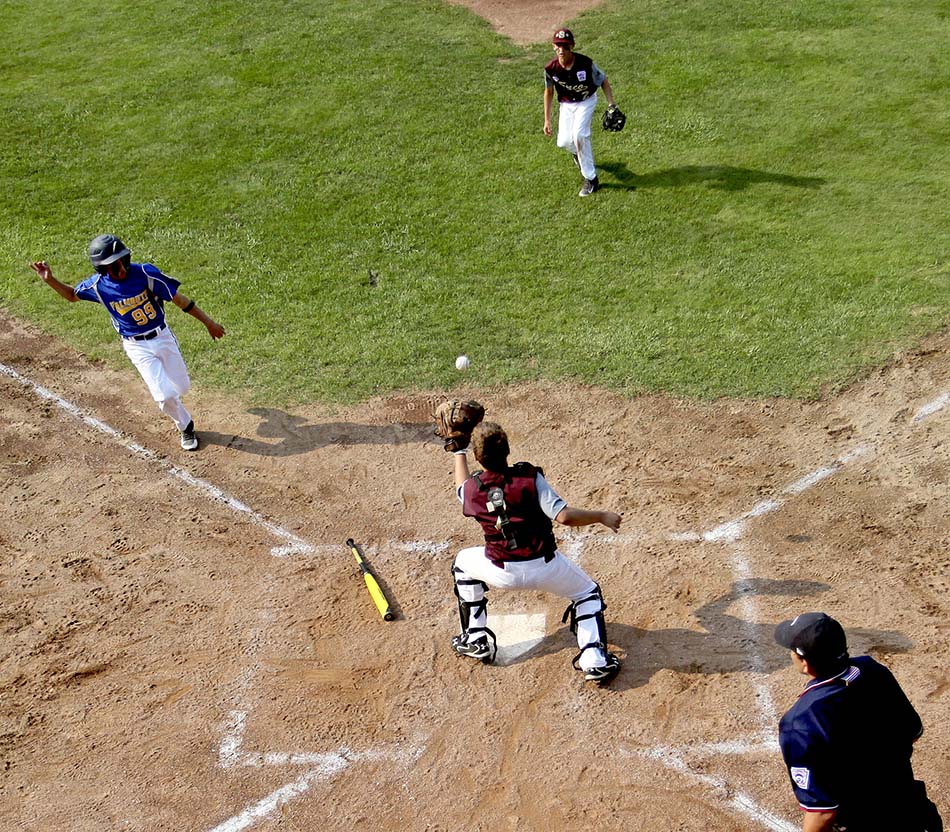
Technically, I used a Canon 5d2 with a wide angle lens set to around 35 mm. I taped down the focus, used a manfrotto magic arm to hold the camera in place, a safety clip (always!) in case the magic arm fails, and I used Pocket Wizards to fire the camera. I had PW’s in the hotshoe of my handheld so whenever I fired the shutter on them it triggered the remote.
As for the why, again, it just goes back to trying to present something different. I set up this remote hoping to get a play at the plate. Something a bit different and cleaner than the standard angle. While I did get a little bit of action during the game, it all paled in comparison to the culmination moment.
TID:
What challenges did you encounter, especially if you've done this before?
GABE:
It was really hot that day, especially for Maine, and climbing around first on the dugout’s pitch tar roof, and then again on a chain link fence, proved sweat-inducing. But beyond that, mounting the camera was a bit more challenging than anticipated. I had to have it shoot through the chain link fence, so the zoom had to be set to just the right millimeter or I would get the edges of the fence in the frame. The other issue was access. To get the overhead view I wanted, I had to climb out on top of the chain link fence that was at a 45 degree angle with the ground.
TID:
How did you handle and overcome these problems?
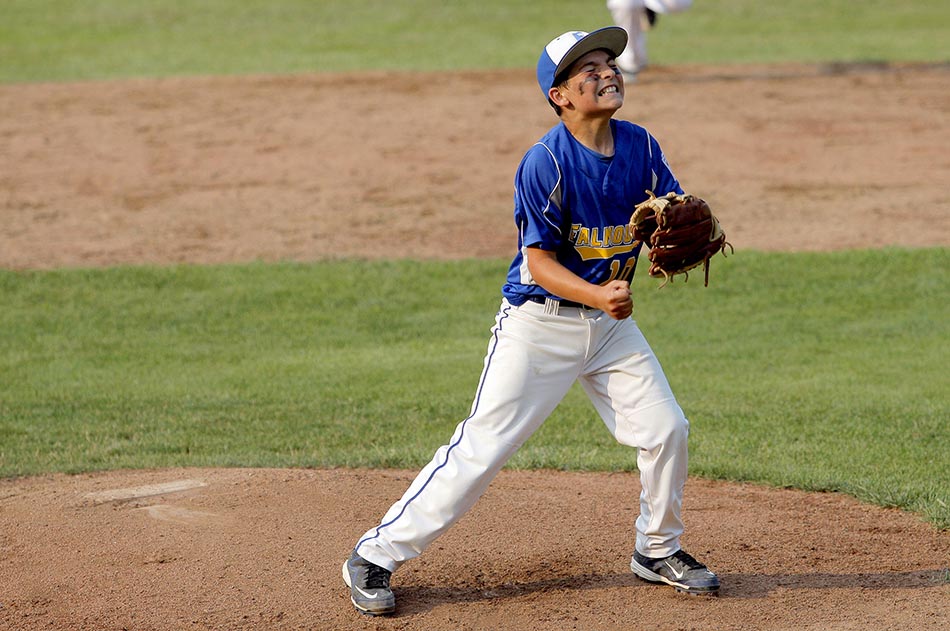
GABE:
I strapped all the gear to myself, climbed to the top of the press box and swung out onto the fence. (At this point the kind gentlemen who represented the local Little League pretended to a) not know me and b) not see me.) I had to keep one hand on the fence the whole time. This proved tough for mounting the camera in the correct spot. I had to lie horizontally on the fence and focus on one task at a time. First nailing down the angle, second lining up the focus with live view and taping it down.
TID:
Now, onto the moment. Can you talk about the moments leading up to the picture and also the actual moment. How did you balance shooting both?
GABE:
As I mentioned before I was really counting on the remote for action at the plate. I had an inkling I would get a celebration at home plate after a home run or something like that, but not the final celebration. When it became clear that Falmouth (team in blue) was going to win, I positioned myself in what I hoped would be the best spot to photograph the pitcher and catcher celebrating, with the entire team eventually piling on. While I do enjoy photographing professional sports, one of the things I really enjoy about high school and even lower level sports is the amount of pure emotion that comes out of it. These kids really are playing for the love of the game. The pitcher had a lot of good emotion I was able to make a picture with, and the team celebration was okay, but then my attention turned to the young batter for Saco who was clearly taking the loss pretty hard. Out of the corner of my eye I saw him slumped over in the batter’s box and when I trained my camera on him he got up and threw his helmet in anger. I thought that would serve as a decent photo, until I remembered the remote and immediately thought - there might be something more here.
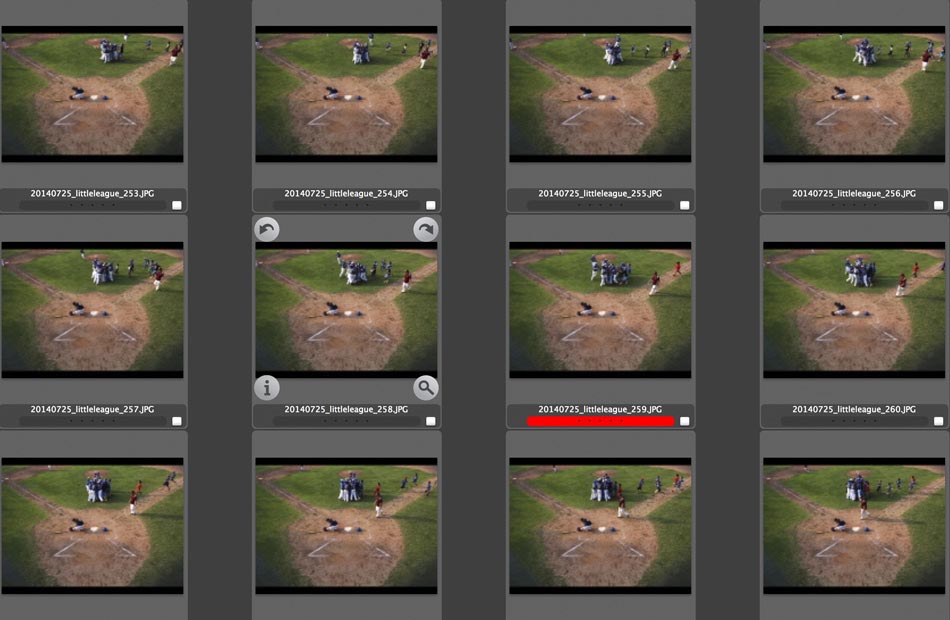
TID:
What surprised you about the moment?
GABE:
I was surprised to see how well the scene naturally composed itself, and was very happy to see such celebration and such dejection in the same frame. Usually there’s one good element and the other is a bit lacking. I was also surprised by the reaction of the batter, who threw his helmet and started crying. In my mind that element is what really makes the photo.
TID:
What have you learned about yourself in the process of making images like this?
GABE:
I’ve learned to trust myself more. I’ve been doing this for a while now and still to this day I can’t quite relax until I’ve got a picture I’m really happy with. That said, making pictures like this, pictures I want to make, gives me more confidence to take those risks in the future. I find it’s a tough balance because working at a newspaper, coming away without a photo is never an option. But when you can find those situations where you can take the opportunity to do something unexpected, just do it! It doesn’t always work, but I mostly never regret it.
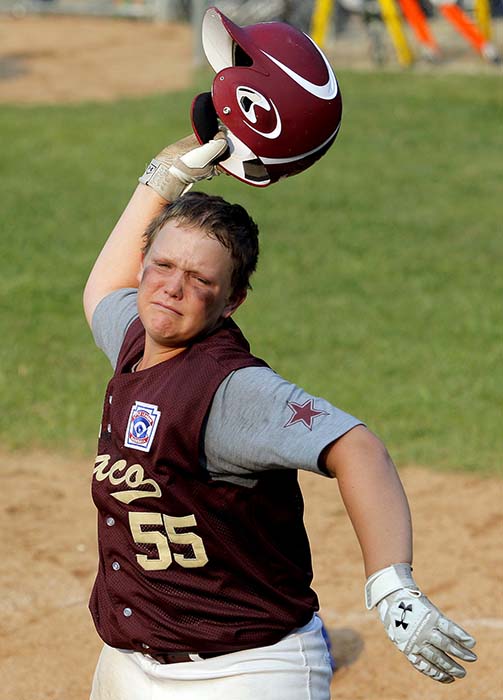
TID:
What have you learned about others?
GABE:
I think that others are generally receptive to what we try to do as photojournalists. There are the exceptions, but for the most part I like to believe that people are good and try to help. What this picture helped me learn, and what working at a paper where the community is the emphasis, is that as a photojournalists we are part of the community. We’re not outsiders and I think we’ll get further making intimate pictures of people we care about by showing kindness and compassion.
TID:
in conclusion, what advice do you have for photographers? Can you also touch on overcoming fears on shooting with remotes as many have some fears with it.
GABE:
Advice for other photographers would be to keep shooting and keep taking the kind of pictures you love and want to make more of. If you fill your portfolio with pictures that are personally meaningful and with stories that you want to tell, it will not only show in your work, but you’ll have more fulfillment in your career, as well. Also - don’t let the experiences pass you by. When I was younger, I would sometimes be so focused on nailing the moment I wouldn’t pay attention to what was around me. Next time you’re at a big event you’ve always wanted to cover, or in a beautiful part of the world you’ve always wanted to visit, stop, put the camera down, and look around. Soak it in. I think you’ll be surprised how much it will help you see more and better pictures, too.
As for remotes, don’t let the mechanics of it intimidate you - you’re still making pictures, just with some extra gear and your camera a little further from you (scary). Think of the parts you need - not many - camera and lens, super clamp, safety clip, magic arm, pocket wizard, and cable for pocket wizard. Make sure the camera is firing, find the right angle, and go for it.
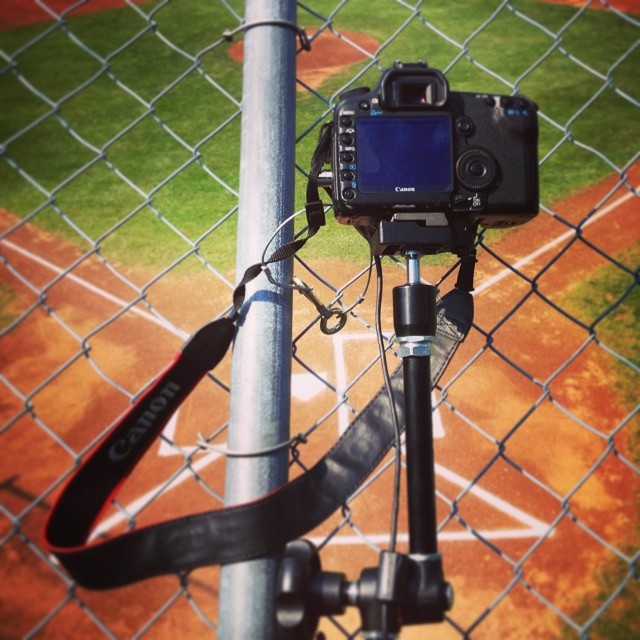
I would recommend trying a non-basketball remote first - those are the ones that are typically intimidating, having to mount behind the glass and cut down on reflections. Go for something like this, something in the open, and once you have success you can build on that and gain confidence. Also - double, triple, and quadruple check your focus. There’s nothing more disappointing than thinking you have a great angle for a remote and then everything goes out of focus!

:::BIO:::
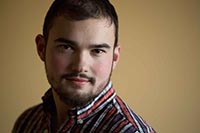
Gabe Souza is an editorial photographer and videographer based in Portland, Maine. He is currently on staff at The Portland Press Herald/Maine Sunday Telegram. Souza has been recognized for his work by the National Press Photographer’s association, the Associated Press, the EMMY awards, and more. There isn’t much Souza won’t do to get a photo including climbing a tree, standing on a police cruiser, or leaning out the side of a plane in the middle of January. His work has appeared in media affiliates throughout the world. When not behind the camera, he can be found driving his Mustang, enjoying the Maine outdoors with his girlfriend and dogs, or listening to baseball on the radio.
You can see his work here: